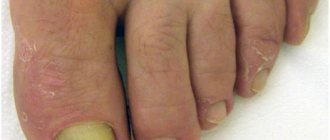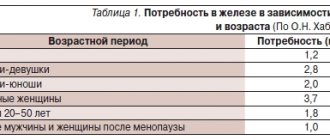Medical Internet conferences
Scientific supervisors : associate, Ph.D. Petrova A.P., ass. Venatovskaya N.V.
Relevance. The relevance of this work is due to the fact that in the absence of collecting an anamnesis before the introduction of local anesthesia, adverse reactions in the patient are possible, which can lead to complications including death.
Objective: to determine the methodology for selecting a local anesthetic drug in patients belonging to various risk groups.
Tasks:
1. Study the classification of local anesthetics and their pharmacological properties
2. Select the right local anesthetic based on medical history and allergy tests in patients belonging to different risk groups
Materials and methods. An analysis of scientific articles in Russian and English, library sources, and master's theses on the topic of an algorithm for choosing a local anesthetic drug for patients at risk was carried out.
Results and discussion. Proper anesthesia management reduces the risk of life-threatening emergencies during an outpatient dental appointment. Improving the quality, efficiency and safety of dental care is inextricably linked not only with the further improvement of manual skills, but also with the formation of professional competence among dentists [1].
Classification of local anesthetics and mechanism of action.
Depending on the intermediate chain, MAs are divided into esters and amides. The first group of local anesthetics (ester group) includes esters of benzoic acid (cocaine, Bencaine), esters of para-aminobenzoic acid (procaine, butamben), esters of aminobenzoic and benzoic acids (tetracaine). Ether MAs are absolutely unstable in solutions and are rapidly hydrolyzed in the body by pseudocholinesterase and some other esterases. One of the hydrolysis products is para-aminobenzoic acid, which can cause allergic reactions. The plasma half-life of these substances is very short; for this reason, their separation in tissues has not been sufficiently studied.
The second group of MAs (group of amides) includes amides of heterocyclic and aromatic acids, amides of aromatic amines - anilides (lidocaine, bupivacaine, mepivacaine, ropivacaine, etc.). Amide MAs are relatively stable in solution and are slowly hydrolyzed by liver microsomal enzymes. The rate of metabolism of different drugs is extremely variable: prilocaine is the fastest metabolized drug, bupivacaine the slowest. A small number of substances are excreted in an unmodified form by the kidneys. A significant part of LA acts in the systemic circulation after administration. The amount of absorbed drug and its peak plasma concentration depend on the dose and the presence of a vasoconstrictor in the solution (especially during conduction and infiltration anesthesia). The same dose of LA is associated with a different risk of toxic effects and depends on the anesthesia technique, the level of tissue vascularization and interaction with tissue lipids. Anesthetics are rapidly absorbed through the mucous membranes. The binding of MA to plasma proteins has a major influence on pharmacokinetics and pharmacodynamics. Anesthetics of the ester group combine with plasma proteins insignificantly (<5–10%). On the contrary, anesthetics of the amide group actively combine with proteins, the level of binding ranges from 55 to 95%. Protein binding has a major influence on the penetration of MA across the placental barrier. Already after absorption of the anesthetic from the area of introduction, its concentration in plasma depends on the rate of distribution in tissues and elimination. The half-life of the MA group of esters is relatively short (about 10 minutes) due to rapid hydrolysis under the action of pseudocholinesterase. On the contrary, the terminal half-life of amide anesthetics ranges from 100 minutes for lidocaine to 200 minutes for bupivacaine [2].
Local anesthetics, by blocking sensitive nerve endings and (or) conductors, reduce or completely eliminate the flow of impulses from the site of painful interventions into the central nervous system, relieving pain without turning off consciousness, as well as the patient’s contact with the doctor.
There are a number of requirements for local anesthetics: they must have excellent diffusion ability, significant local anesthetic activity, selectivity and reversibility of action on nerve endings and fibers, a large breadth of action, rapid onset and sufficient duration of effect, low systemic toxicity, and have an optimal potency/toxicity ratio , do not irritate or damage tissue at the site of application, withstand sterilization, and be stable in solution.
In order to select an effective and safe drug, the dentist must know the main local anesthetics, the features of their chemical structure, physicochemical properties, pharmacokinetics, mechanism of action and pharmacodynamics, take into account the likelihood of the presence of a vasoconstrictor and other auxiliary components (stabilizers, preservatives) in the local anesthetic solution etc.), be able to select and implement an adequate clinical pharmacologically based anesthetic treatment, taking into account the intended intervention, age, somatic and psycho-emotional state of the patient, and the presence of side effects to local anesthetics in the anamnesis.
In their study, Daubländer Mainz analyzed questionnaires in Germany, which showed that articaine preparations with epinephrine (adrenaline) at a concentration of 1:100,000 caused more sympathomimetic effects than drugs with the lowest (1:200,000) vasoconstrictor content. Comparative studies of the effectiveness and safety of local anesthetic solutions containing various concentrations of vasoconstrictors have shown that for dental practice in most cases, the addition of epinephrine (catecholamine) at a concentration of 1:100,000 does not have clinically significant advantages over drugs containing epinephrine (adrenaline) at a concentration of 1:200,000 [eleven]. At the same time, an increase in the concentration of the vasoconstrictor in the local anesthetic solution significantly increases the risk of local and systemic adverse reactions. For local anesthetics of the ester group (procaine), and also for the anesthetic of the amide group articaine, the risk factor is a lack of cholinesterase in the blood plasma.
Principles for selecting a local anesthetic in risk groups
For local anesthetics of the amide group - early childhood, severe liver and kidney dysfunction, heart failure, bronchial asthma.
All solutions of local anesthetics containing vasoconstrictors must be prescribed with caution to patients with severe cardiovascular (decompensated heart failure, paroxysmal tachycardia, arterial hypertension, coronary and cerebral circulation disorders, etc.) and endocrine diseases (thyrotoxicosis, diabetes mellitus), glaucoma, high anxiety and, in addition, taking non-selective ß-blockers and tricyclic antidepressants [5].
In patients with cardiovascular pathology, a large response of the autonomic nervous system to any psycho-emotional stress can be observed; for this reason, they react particularly acutely not only to intervention in the oral cavity, but even while waiting for treatment.
When selecting local anesthetic drugs for patients with cardiovascular diseases, it is necessary to take into account the fact that not only MA, but also the presence of a vasoconstrictor in the local anesthetic solution may pose a threat to them. In such patients, it is necessary to take into account the likelihood of an increased cardiodepressive effect when combining local anesthetics with beta-blockers, sympatholytics and antiarrhythmic drugs. High doses of LA suppress the automatism of the heart muscle, lengthen the interval of spontaneous depolarization, exhibit an inhibitory effect on cardiac contractility to a degree proportional to their anesthetic activity, and suppress conduction up to AV block. An increase in the secretion of endogenous adrenaline, as well as the result of a stress reaction to the upcoming dental intervention and pain, and in addition, the use of epinephrine in local anesthetic solutions in this group of patients can lead to acute decompensation of cardiac activity, an increase in blood pressure, tachycardia, arrhythmia, chest pain and other complications, including the absence of any interventions and the use of local anesthetic drugs, which indicates the need for very careful attention to the selection of anesthesia. Since the stimulating effect of adrenomimetics on the cardiovascular system in patients with reduced reserves, angina pectoris or a history of myocardial infarction can induce the formation of serious side effects, for them it is rational to select articaine preparations that have high activity, which make it possible to reduce the concentration of epinephrine down to 1 :400,000, or use local anesthetic substances without a vasoconstrictor component. When providing dental care to patients suffering from coronary heart disease, it is necessary to take into account the fact that adrenergic agonists reduce the activity of nitrates, and non-selective beta-blockers (propranolol) increase the pressor effect of epinephrine. When local anesthetic solutions, including epinephrine, are combined with cardiac glycosides and tricyclic antidepressants (amitriptyline), the risk of arrhythmias increases. In patients with cardiovascular diseases, there is often a decrease in compensatory and adaptive mechanisms in the body, which can affect the metabolic rate and excretion of LA, and therefore they are recommended to choose drugs that have low toxicity and are rapidly metabolized in the body [6].
Diabetes mellitus can develop in patients while taking a complication such as coma, which can be not only hyperglycemic, but also hypoglycemic. It is recommended to take these patients in the morning 1–2 hours after meals and usually used hypoglycemic drugs. Since catecholamine increases blood glucose levels, it is recommended for patients with diabetes to use local anesthetic solutions in the absence of a vasoconstrictor. The introduction (in the palate) of solutions containing a high concentration of a vasoconstrictor (1:100,000) can provoke aseptic tissue necrosis in patients with diabetes.
In patients with thyrotoxicosis, there is an increased tone of the sympathetic nervous system: high emotionality, nervousness, emotional lability, hyperhidrosis, hand tremors, increased heart rate, goiter, high susceptibility to adrenaline. These signs have every chance of increasing in the presence of increased secretion of adrenaline due to fear and pain during dental intervention, and in addition, after the introduction of local anesthetic substances containing epinephrine, and therefore it is rational for this category of patients to use local anesthetics in the absence of a vasoconstrictor.
Impaired liver function has a great influence on the biotransformation of local anesthetics of the amide group. Articaine has not only an amide, but also an additional ester bond; for this reason, its metabolism occurs not only in the liver, but also by esterases in tissues and blood. This makes articaine the drug of choice in patients with pathology of liver function.
If renal function is impaired, the excretion of local anesthetics and their active metabolites may be impaired, which in turn increases the toxicity of the drug. These patients are recommended to use mildly toxic substances, during the biotransformation of which inactive metabolites are formed.
Patients with allergic diseases are a special group of people. In order to solve the problem of the use of local anesthetics in these patients, a detailed allergic and pharmacological history is especially significant. We need data on concomitant diseases and their basic therapy. It is necessary to take into account the tolerability of both the local anesthetic itself and the vasoconstrictor, preservative and stabilizer contained in the solution. In patients with sulfonamide intolerance, the use of ether local anesthetics is not recommended. For patients with bronchial asthma, it is dangerous to use local anesthetics with stabilizers (sodium and potassium sulfites) due to the threat of bronchospasm. Data on previous reactions to drugs from other groups can help exclude the formation of cross allergic reactions. It is preferable (taking into account the medical history) to prescribe local anesthetics of the amide group in the absence of stabilizers and preservatives. It is especially risky for such patients to exceed the dose! The patient is required to have a “Passport for a Patient with an Allergic Disease.”
Pregnant women are at risk of miscarriage, especially during the first 3 months of pregnancy, due to stress during the dental appointment (fear, pain) and the use of local anesthetic solutions with significant doses of epinephrine (adrenaline). Substances passing through the placenta have the potential to cause harm to the fetus. When using local anesthetic solutions containing a vasoconstrictor, it is necessary to take into account that epinephrine (catecholamine) passes through the placental barrier. During pregnancy, it is recommended to use safer articaine-containing MAs, which penetrate less through the placental barrier and contain epinephrine (catecholamine) in a concentration of 1:200,000 or lower.
Representatives of the fairer sex during lactation are at risk of receiving medications (local anesthetics and vasoconstrictors) to the baby through mother's milk. Such patients need to use drugs containing epinephrine in a concentration of 1:200,000 or lower, as well as drugs that do not contain a vasoconstrictor (Mepivacaine).
In elderly patients, the compensatory and adaptive mechanisms in the body decrease, and concomitant diseases are often noted, and therefore medication preparation is important. Patients in this category are recommended to use substances without a vasoconstrictor or with a minimal concentration of the latter. These anesthetics should have low toxicity and be rapidly metabolized in the body, and in addition, it is necessary to reduce the dose of anesthetic in patients aged 70 years by one third, in patients aged 80 years - by 2 times [12].
For children, local anesthesia containing a vasoconstrictor is indicated over 4 years of age; it is necessary to select a drug that would make the intervention painless, but in addition, the anesthesia should not be too long after completion of treatment, otherwise the child often damages the mucous membrane of the lips, cheeks, and tongue. The rate of absorption, biotransformation and excretion of medications in a child correlates with age and body weight, which must be taken into account when choosing the dose of the drug in this group of patients. The weight and physiological characteristics of children change regularly, which must be taken into account in order to reduce the risk of adverse reactions and overdose.
Dosage.
Articaine 4% with vasoconstrictor. Maximum dose 5 mg/kg, 1 carpule 1.8 ml. Mepivacaine 3% without vasoconstrictor. Maximum dose 4.4 mg/kg, 1 carpule 1.8 ml
Thus, due to reduced body weight, the risk of overdose and the formation of toxic reactions in a child is higher, and the reduced ability of drugs to combine with blood proteins, imperfect barrier mechanisms, high permeability of the blood-brain barrier reduce the predictability of the pharmacodynamic features of drug therapy, in addition, one should not use local anesthetics with a significant content of vasoconstrictor.
conclusions:
1. Preparations from the amide group have less toxic effects compared to esters. As a result, amide anesthetics are the drugs of choice today.
2. A relatively safe local anesthetic is mepivacaine, which does not contain a vasoconstrictor and can be used in patients of all risk groups. Also for elderly patients, patients with impaired liver and kidney function, pregnant women and women during lactation, children over 4 years of age, it is possible to use articaine with an epinephrine content of 1:400,000.
Types of Local Anesthesia
The type and dose of anesthesia will depend on many factors. These include patients' age, weight, allergies, body part being operated on, and any current health conditions.
Various drugs are used to block pain. They can be applied by injection or by applying a spray or ointment.
The drug works by targeting specific nerve pathways to prevent the nerves in the area of application from sending signals to the brain.
Typically, the drug takes effect within a few minutes and wears off within a few hours. A stronger and higher dose will last longer.
Cocaine was the first anesthetic, but is now rarely used. Lidocaine is currently the most widely used local anesthetic, but different drugs are used for different purposes.
For longer procedures, bupivacaine is more suitable, but it may be more painful when first used. Therefore, the anesthesiologist may use lidocaine first and then administer bupivacaine if numbness is required for a longer period.
Synthetic anesthetics are similar in structure to cocaine, but these drugs do not have the same potential for abuse.
About pain
Pain is an extremely unpleasant sensation. Pain as a phenomenon cannot be limited only to the concepts of an organic or functional disorder that is located at the site of injury.
Pain affects not only the location of the lesion, but also the activity of the body as a whole. This is confirmed by numerous studies on the consequences of such discomfort.
Pain is the most common and at the same time the most dangerous symptom that can occur in a sick person.
Pain is an integrative function of the body, which is characterized by psychological and emotional changes. It is she who is responsible for mobilizing the body’s defense systems from the effects of negative factors.
There are two types of pain:
- acute;
- chronic.
Acute pain is a reaction to an external stimulus. The reaction manifests itself due to the delivery of an impulse through nerve channels to the brain. It is transmitted, and then, as it were, returns to the source of the lesion.
Acute pain appears due to damage in the form of fractures of any bone, muscle or ligament sprains, injuries, caries, as well as various diseases of the internal organs. As a rule, this type of pain is treated well with painkillers (analgesics).
Chronic pain is more complex, and the causes of its occurrence need to be carefully studied. As a rule, this type of pain indicates difficulties in treating an injury or disease. It always drags on for more than six months. There is a connection between chronic pain and serious diseases, such as:
How to give an intramuscular injection correctly
When choosing a place to administer an injection, the following places are searched:
- where injections have already been given (there are seals there);
- hemangiomas;
- moles;
- prominent capillaries.
It is prohibited to inject into such places.
To make an intramuscular injection without harming yourself, you need to perform the following manipulations.
- Wash your hands with laundry or any other soap. This is important because your hands, and especially the area under your nails, are where the most germs accumulate. Girls who have long manicured nails need to wash the area under them with a special brush.
- Prepare three cotton pads.
- Moisten the first cotton pad with an antiseptic and wipe your hands as thoroughly as possible.
- Take out the package containing the syringe. Open it. Be careful not to touch the needle during assembly.
- Take an ampoule with injection solution. Using a second cotton pad, which is also moistened with an antiseptic, take the top of the ampoule and break it. You can do it differently - if you have a special file in the kit, use it to file down the top of the ampoule.
- Remove the assembled syringe from the package. Remove the cap from the needle. Insert the needle into the ampoule itself (you must try not to touch the walls and bottom). In this way, draw up the medicine, and then get rid of the air inside the syringe by gently pressing the piston.
- Take a third cotton pad. They need to clean the area where the injection will be given. The place can be marked in advance with iodine - this will make it easier to get where you need to go.
- The hand needs to be pulled back, but not much. Then the injection is given.
- At the end of the procedure, remove the needle from the injection site. Then take a cotton pad and press it harder to the needle insertion site. Hold for a minute.
Each time you need to change the injection site to avoid the formation of seals. It is recommended to paint the mesh with iodine - this way you can achieve disinfection and warm up the area.
It is worth noting a separate case in this instruction. If the medicine is in powder form, one additional step is required. In addition to the fact that the ampoule with the solution needs to be opened, the protective foil removed, and the cap disinfected, you need to add the medicine in powder form to the liquid and mix until smooth. Only after this can the resulting drug be injected into the syringe. Then proceed in accordance with the instructions.
General anesthesia
General anesthesia is a last resort when other methods of pain relief are ineffective. When is general anesthesia used for dental treatment:
- serious surgical interventions (for example, in acute or chronic osteomyelitis, multiple tooth extractions);
- if the patient suffers from dental phobia and there is no other way to cure teeth except to go into medicated sleep;
- if the patient (child or adult) suffers from cerebral palsy, autism, Down syndrome, or other serious mental disorders;
- pronounced gag reflex or extremely profuse drooling;
- allergy to local anesthesia, inability to select suitable drugs.
Contraindications:
- serious heart disease, high blood pressure;
- severe respiratory diseases.
You will first need to take a general blood test and an ECG, as well as consult an anesthesiologist and dentist.
ZAKS
The use of nitrous oxide (or laughing gas) is an ancient (used since 1844) and very effective method of pain relief, which has been adopted by the most modern clinics. Inhaling small amounts of nitrous oxide mixed with oxygen causes mild euphoria and has a relaxing and pain-relieving effect (called sedation). Nitrous oxide sedation is absolutely harmless, acts almost instantly, and recovery from it takes 10–15 minutes without any consequences.
Indications:
- fear and anxiety before treatment;
- young age of patients (most often ZAX is used for children);
- long-term treatment (for example, many teeth are removed at once);
- pronounced gag reflex, profuse salivation.
Contraindications:
- age under 3 years;
- severe intoxication, chronic alcoholism;
- mental disorders, severe neurological diseases;
- sensitivity to individual components of the mixture;
- very strong excitement before upcoming dental procedures, hyperexcitability or hysteria (in children);
- 1st trimester of pregnancy;
- use ZAX with extreme caution in case of high blood pressure, previous concussion and other head injuries;
- Serious respiratory tract infections (asthma, bronchitis) may be a contraindication to sedation.
ZAX does not exclude the use of conventional anesthetics. There is no need to prepare for ZAX in any specific way, but 2 hours before the procedure it is highly advisable to refuse any food (you can drink). On the day of sedation, it is better to take a day off from work and not drive. Children are advised to refrain from active games for 1-2 hours after sedation.






